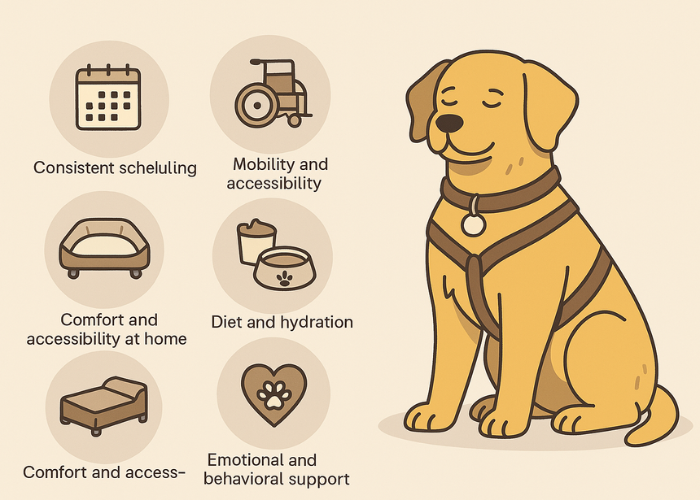Understanding Dog Body Language
Dogs communicate primarily through body language, using a combination of tail movements, ear positions, facial expressions, and posture to express their emotions and intentions.
Unlike humans, who rely heavily on verbal communication, dogs depend on these nonverbal cues to interact with their owners, other animals, and their surroundings. Understanding these signals is crucial in ensuring a strong bond between pet and owner, preventing miscommunication, and avoiding potential behavioral issues.
A misinterpretation of a dog’s body language can lead to unnecessary stress for both the pet and the owner. For example, a wagging tail does not always signify happiness, and avoiding eye contact is not necessarily an act of defiance but rather a sign of submission or nervousness.
By learning to accurately read and respond to a dog’s body language, owners can create a safe, supportive, and comfortable environment that fosters trust and security.
Key Body Language Signs and Their Meanings
1. Tail Position and Movement
A dog’s tail is one of the most expressive parts of their body. Its position and movement can convey a range of emotions, from joy to fear.
- Wagging rapidly – Excitement or happiness, often seen when greeting familiar people.
- Slow wagging – Cautious curiosity, indicating uncertainty or mild interest.
- Tail tucked between legs – Fear or submission, often in response to intimidation or punishment.
- Raised tail – Confidence or dominance, common in assertive dogs.
- Still tail held high – Alertness, indicating that the dog is assessing the situation carefully.
2. Ear Positions
The position of a dog’s ears can reveal their level of alertness and emotional state.
- Ears forward – Interest or curiosity; the dog is focused on something specific.
- Ears flattened against the head – Fear, submission, or stress, often seen in anxious dogs.
- Relaxed ears – A calm and content dog, usually at ease in their environment.
- One ear up, one down – A sign of curiosity or indecision.
3. Eyes and Facial Expressions
A dog’s eyes are often referred to as windows into their emotions. Understanding eye contact and facial expressions can help interpret their feelings.
- Soft eyes and relaxed face – Trust and comfort, indicating a relaxed and happy dog.
- Wide eyes with visible whites (whale eye) – Anxiety or discomfort, often signaling nervousness or uncertainty.
- Avoiding eye contact – Submission or nervousness, not a sign of guilt.
- Direct stare – Challenge or aggression, a warning signal that should not be ignored.
- Blinking or squinting – A sign of relaxation or even affection.
4. Mouth and Lips
Dogs also communicate through their mouths, whether by panting, licking, or growling.
- Relaxed mouth with slightly open lips – A calm, happy dog.
- Lip licking or yawning – Signs of anxiety, discomfort, or an attempt to self-soothe.
- Bared teeth with growling – Defensive or aggressive behavior, indicating the need for space.
- Exaggerated panting – Can be a sign of stress, overheating, or excitement.
5. Body Posture
A dog’s stance and overall posture can reveal a lot about their mood and intentions.
- Play bow (front legs stretched, rear up) – Playfulness and friendliness, inviting interaction.
- Stiff posture with raised hackles – Alertness, defensive behavior, or aggression.
- Rolling over, exposing belly – Submission or trust, but not always an invitation for belly rubs.
- Cowering or shrinking back – Fear or insecurity, often accompanied by a tucked tail.
- Leaning into a person – Seeking affection and reassurance.
How to Respond to Your Dog’s Body Language
1. Encourage Positive Behaviors
When a dog exhibits confident, relaxed body language, reward them with praise, petting, or treats. This reinforces positive behavior and helps build their confidence in social situations.
2. Respect Their Boundaries
If your dog is showing signs of stress, such as a tucked tail or flattened ears, give them space. Pressuring a fearful dog can lead to defensive behaviors like growling or snapping.
3. Use Calm Energy
Dogs mirror their owner’s emotions. If you remain calm in stressful situations, your dog is more likely to do the same. Avoid sudden movements or loud tones when addressing a nervous dog.
4. Socialization and Training
Exposing your dog to various environments, people, and other animals can help them feel more at ease in different situations. Consistent training using positive reinforcement can enhance their confidence and trust.
Conclusion
Understanding your dog’s body language is essential for building a strong and trusting relationship. Dogs rely on subtle cues to communicate their emotions, and being able to recognize these signals allows owners to respond appropriately. This not only prevents potential behavioral issues but also enhances the overall well-being of the dog.
By paying close attention to your dog’s posture, facial expressions, and tail movements, you can foster a deeper connection and improve communication. Every wag, yawn, or ear twitch tells a story—one that, when understood, enhances the bond you share with your furry companion. Investing time in learning these cues not only benefits your dog’s emotional well-being but also makes for a more harmonious and fulfilling companionship.
FAQs
1. Why does my dog yawn when not tired?\
Yawning can signal stress, nervousness, or an attempt to calm a situation.
2. What does it mean when my dog leans against me?\
Leaning is usually a sign of affection and trust.
3. Should I be worried if my dog shows the whites of their eyes?\
This “whale eye” can indicate anxiety or discomfort.
4. Why does my dog roll onto their back when I approach?\
It may be a sign of submission or a request for belly rubs.
5. How can I tell if my dog is truly happy?\
A wagging tail, relaxed body, and soft eyes usually indicate happiness.



